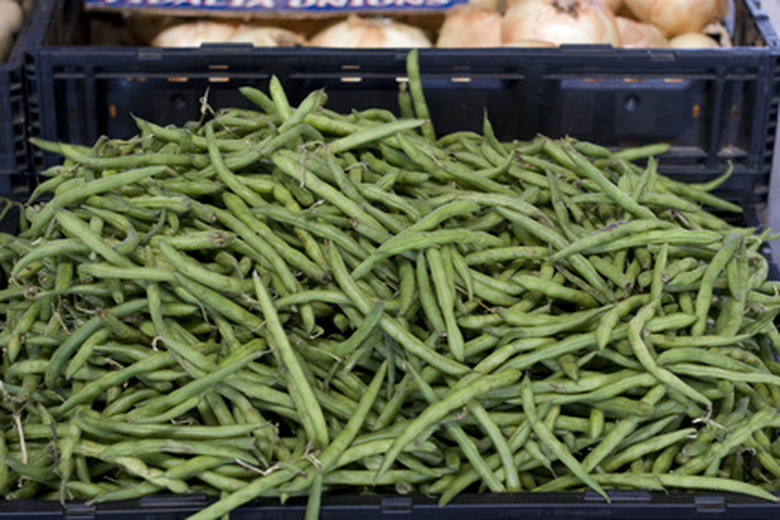Fertilizer For Pole Beans
Pole beans grow up poles or trellises. They grow best in loose soil that drains well, and although they can grow in soils with pH levels ranging from 5.5 to 6.5, they prefer soils in the 5.8 to 6.0 range. There are a number of varieties of pole beans, including Dade, Kentucky blue and Romano, as well as some unusual heirloom varieties. Fertilizing your pole beans will help the vines grow stronger and help you produce a stronger crop of beans.
General Fertilizer Types
Although it is always best to have your soil tested by your county agricultural extension office, if inconvenient, you can use a general-purpose fertilizer. The University of Georgia's website recommends a 6-12-12 fertilizer as a good all-around fertilizer for pole beans. The first number indicates the percentage of nitrogen in the fertilizer. The second indicates the percentage of phosphorous. The third indicates the percentage of potassium. A 6-12-12 fertilizer has 6 percent nitrogen and 12 percent of both phosphorous and potassium.
- Pole beans grow up poles or trellises.
- Although it is always best to have your soil tested by your county agricultural extension office, if inconvenient, you can use a general-purpose fertilizer.
Application Rate
The University of Georgia recommends applying 6-12-12 fertilizer at a rate of 600 to 800 pounds per acre. Because most home gardeners are not growing acres of pole beans, this converts to between 2 and 3 ounces per square yard of pole beans.
Application Method
Unless directed by the fertilizer packaging to apply otherwise, make a line of fertilizer down each row of pole beans about 3 inches from the stalks. The row should contain the desired amount of fertilizer. For example, if you are fertilizing a square yard of pole beans, your line of fertilizer should contain between 2 and 3 ounces.
Additional Nitrogen
Additional nitrogen can help your pole beans. The University of Georgia recommends the equivalent of 1/4 ounce of nitrogen per square yard of pole beans. Half of this application should be applied when the beans have gone halfway up the trellis. Apply the other half when the beans are about an inch long.
- The University of Georgia recommends applying 6-12-12 fertilizer at a rate of 600 to 800 pounds per acre.
- The University of Georgia recommends the equivalent of 1/4 ounce of nitrogen per square yard of pole beans.
Organic Fertilizer
The University of Georgia also recommends starting the season by augmenting your soil with organic material, like compost. If you have your soil tested, it might call for the addition of dolomitic lime. The University of Wisconsin lists a number of organic fertilizers that work well with pole beans. The following is a list of fertilizers and their approximate N-P-K levels: Bone meal, 1-14-0; compost, 3.5-1-2; fishmeal, 11-8-3; soybean meal, 7-.5-2. The exact amount of nutrients in organic fertilizer can vary, so check the packaging for analysis if using commercially produced organic fertilizers.
